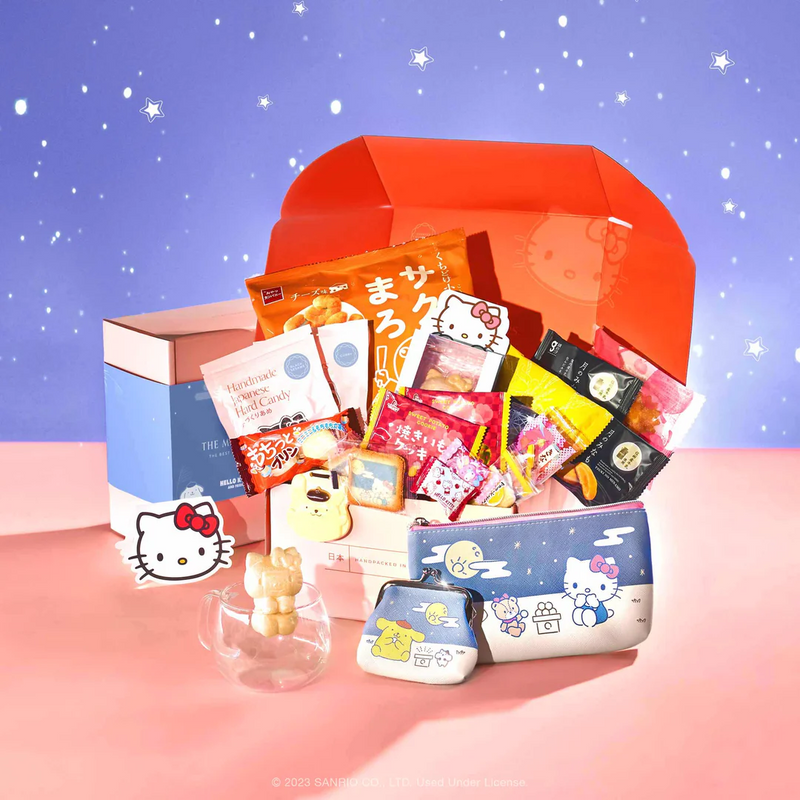Let's Learn Japanese: Part 1
Every month in our culture guide, we share some Japanese vocabulary that complements our Japanese snack experience. The more familiar you become with Japanese snacks and Japanese cuisine, you might start noticing the same words again and again. Have you ever stopped and wondered what exactly those words mean?
As much as we love Japanese snacks, we also love growing your vocabulary with new words. We hope to make the Bokksu community more familiar with Japanese terms and definitions through delicious snacks! Let's discover Japanese through Snacks:
Amanatto (ah-mah,nah-tō) (あまなっとう) - Candied azuki beans made by simmering the beans in sugar syrup. This confection was first created circa 1860 in Tokyo. The store that created amanatto, Eitaro, is still open today!
Anko (ah-n-ko) (あんこ) - Sweet red bean paste made with azuki beans.
Dashi (dah-she) (だし) - A sort of fish stock or broth base made from kombu (kelp), sardine, and/or bonito flakes (shaved pieces of dried tuna).
Goma (go-mah) (ごま) - Black sesame.
Kinako (key-nah-koh) (きなこ) - Roasted soybean powder with a flavor profile similar to peanut butter. Kinako is made by finely grinding roasted soybeans into powder. You will typically see きなこ on dango and abekawa mochi!
Ponzu (poh-n-zoo) (ポンズ) - A thin, citrus-based sauce used in Japanese cooking.
Sakusaku (sah-koo-sah-koo) (さくさく) - crunchy. Next time you eat a せんべい (senbei), think of how「さくさく」 it is!
Sansho (sahn-shō)(さんしょう) - A species of peppercorn indigenous to Japan. 80% of Japan’s Sansho production happens in Wakayama Prefecture. Sansho are the berries of the Japanese prickly ash tree. If eaten as a berry, you will notice a distinct peppery, citrus flavor that is akin to lemon, yuzu and grapefruit! Like Sichuan pepper, when you eat sansho berries, you might experience a numbing, tingling effect on the tongue.
Shisa (shee-sah) (シーサー) - A traditional guardian of Okinawa embodied as a lion-dog deity that wards off evil and brings good. Shisa not only eliminate evil spirits and monsters, they are also known as guardians to residences and shrines. Shisa come in different shapes, colors and sizes, and most homes will display two shisa for protection.
Shochu (show-chuu) (しょうちゅう) - a distilled alcohol made from rice, barley, sweet potato, buckwheat, or brown sugar. Shochu is different from sake which is fermented.
Soramame (so-ra-mah-meh) (そらまめ) - The Japanese word for fava beans, named for the way the pods sometimes grow tall toward the sky.
Torii (toe-ree) (とりい) - a traditional Japanese gate, most often found at the entrance of Shinto shrines. Typically, the function of torii is to indicate the entrance to a sacred space - usually a temple. Itsukushima Shrine might be the most famous とりい since it appears to be floating in water!
Yakkoi (yak-koi) (やっこい) - soft or chewy. Is mochi やっこい or さくさく?
That’s it for this installment of Let’s Learn Japanese! Stay tuned for part 2 next month! If you have some suggestions for terms that you would like to see here sound off below or let us know on twitter!
Author Bio







 Bokksu Snack Box
Bokksu Snack Box

























